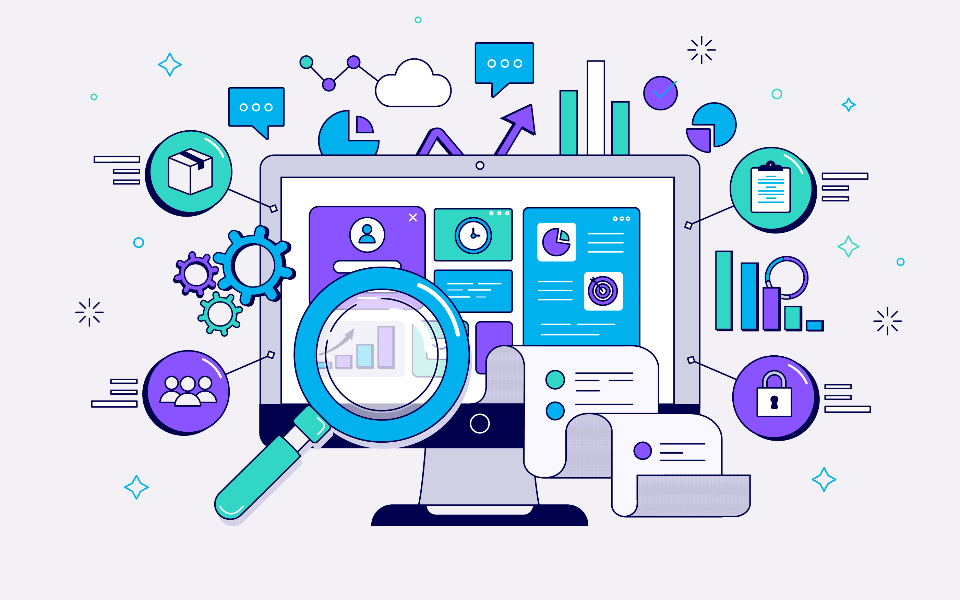
Introduction
In today’s competitive digital environment, data is more than just numbers — it’s the foundation of smart decision-making. Business intelligence analytics empowers organizations to transform raw data into actionable insights. From predictive forecasting to operational optimization, BI services offer a multitude of benefits. However the journey to effective implementation is filled with challenges, especially when integrating BI tools into existing infrastructure.
This blog dives deep into the real-world challenges businesses face during this integration and explores how they can overcome them to unlock the full value of their data.
1. Data Integration from Disparate Sources
Businesses typically manage data across multiple systems: ERPs, CRMs, spreadsheets, cloud apps, and on-premise legacy databases. Each system has its own format, structure, and limitations. Integrating all of this into a single BI platform is far from simple.
To make sense of these different sources, businesses often need ETL (Extract, Transform, Load) processes, APIs, or middleware solutions. Without proper integration, your BI dashboards may display incomplete or misleading data. Organizations need to establish a data integration strategy that enables seamless connection, transformation, and loading of all relevant data.
- Solution: Collaborate with an experienced BI services provider like Instalogic to build secure and scalable integrations with minimal disruption.
2. Data Quality and Consistency Issues
When it comes to business intelligence analytics, the accuracy of insights is only as good as the quality of your data. Disparate systems often store redundant, outdated, or inconsistent data. This not only skews reporting but also damages trust in BI tools.
Effective BI implementation demands strict data governance. This includes deduplication, real-time data validation, and standardization protocols.
- Solution: Set up data quality frameworks and assign ownership to maintain accuracy throughout the pipeline.
3. Compatibility with Legacy Systems
Legacy systems are common in industries like manufacturing, healthcare, and finance. Unfortunately, many of these systems weren’t built with modern BI tools in mind. They lack APIs, use outdated technologies, and store data in formats incompatible with cloud-native BI platforms.
This can delay integration or require costly workarounds like custom-built connectors and translators.
- Solution: Use middleware solutions or consider phased modernization plans that allow old and new systems to coexist temporarily.
4. Performance Bottlenecks and Scalability
As your company grows, so does your data. If your BI infrastructure isn’t designed to scale, you’ll quickly encounter performance issues. Long load times, dashboard crashes, and delayed reports can discourage adoption.
- Solution: Invest in a performance-optimized architecture that supports in-memory processing, data partitioning, and cloud-based scaling. BI services like those from Instalogic can help assess your infrastructure and recommend the right upgrades.
5. Departmental Data Silos
Often, departments operate in isolation, hoarding their data and tools. This leads to siloed insights that don’t reflect the organization. As a result, leadership may end up making decisions based on incomplete information.
- Solution: Promote a centralized data warehouse approach and create interdepartmental data sharing policies to encourage cross-functional collaboration through business intelligence analytics.
6. Data Security and Regulatory Compliance
Integrating BI services means handling massive amounts of sensitive information, which naturally raises concerns about security, privacy, and regulatory compliance.
Regulations like GDPR, HIPAA, and CCPA demand strict control over data access, encryption, storage, and sharing. A breach in this environment can result in reputational damage and hefty fines.
- Solution: Adopt role-based access controls, end-to-end encryption, and real-time monitoring. Ensure your BI tools and service providers comply with global data protection regulations.
7. Limited Internal Expertise and Resources
Implementing and maintaining a business intelligence analytics platform requires skills in data engineering, cloud architecture, and analytics. Small or mid-sized organizations often lack the technical bandwidth to handle complex integrations internally.
- Solution: Upskill internal teams or outsource to a capable BI services partner like Instalogic, which offers scalable solutions and ongoing technical support.
8. Low User Adoption and Cultural Resistance
Technology adoption is not just a technical issue; it’s also a people issue. Employees may resist using BI tools due to fear of change, lack of trust in data, or poorly designed interfaces.
Even if the integration is seamless, low adoption can undermine the return on your BI investment.
- Solution: Conduct training sessions, involve users early in the design process and offer user-friendly tools that align with daily workflows. Tools that enable self-service analytics can empower employees across departments.
9. Complex Reporting Requirements
Despite the rise of no-code BI platforms, creating truly customized, meaningful reports can still be challenging. Business users may struggle to navigate interfaces or connect data points effectively.
- Solution: Simplify reporting with pre-configured templates, visual guides, and AI-driven query suggestions. Instalogic’s BI services can help create intuitive reporting layers that reduce dependence on IT teams.
10. High Cost of Ownership
The total cost of BI integration includes software licensing, infrastructure upgrades, consultant fees, and ongoing maintenance. These costs can spiral out of control if not properly forecasted.
- Solution: Opt for cloud-based BI platforms with flexible pricing models. Create a detailed TCO (Total Cost of Ownership) analysis before beginning the integration. Working with experienced providers like Instalogic ensures cost predictability and efficient implementation.
Conclusion
Successfully integrating BI services into your existing infrastructure can unlock immense value—but not without overcoming several technical, organizational, and cultural challenges.
From cleaning your data and optimizing system performance to navigating legacy constraints and ensuring company-wide adoption, each step requires strategic planning and the right partnerships.
Organizations that proactively address these pain points to position themselves to leverage business intelligence analytics as a true driver of innovation, productivity, and growth.
InstaLogic helps businesses across industries integrate modern BI solutions into complex environments. With end-to-end support, customizable dashboards, and deep domain expertise, Instalogic ensures your BI investment delivers tangible results.
Want to future-proof your analytics infrastructure? Start your BI journey with InstaLogic today.